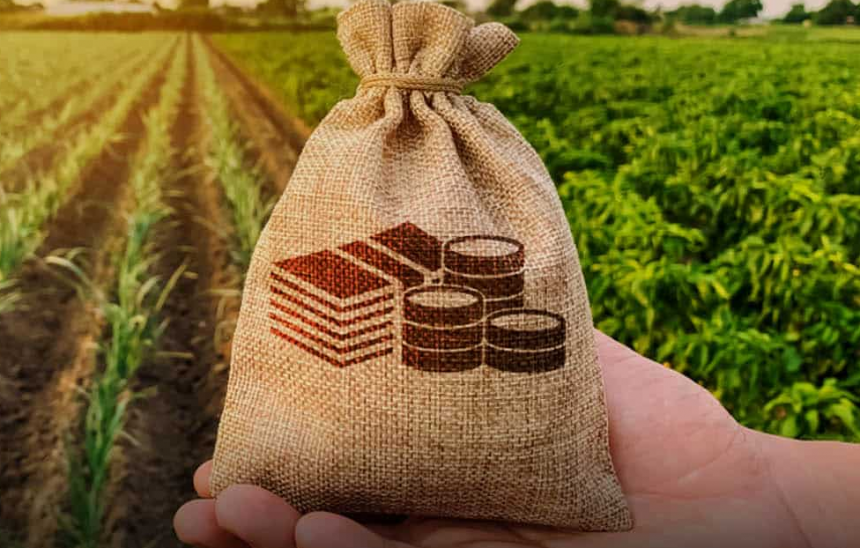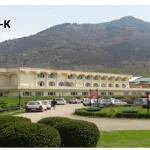With the aspiration of Viksit Bharat, the Union Budget for FY 2025-26 aims to revitalize India’s agricultural and allied sectors by addressing key structural challenges and introducing targeted reforms. This budget prioritizes increasing access to affordable credit, expanding crop insurance, promoting Agri-value chains and achieving balanced regional development with the allocation of whopping Rs 1.52 trillion. One of the major highlights of the budget is the increase in the limit of subsidized farm loans from Rs 3 lakh to Rs 5 lakh per farmer, a move aimed at broadening financial inclusion and supporting farm families. Additionally, the government has set an ambitious target of achieving atmanirbharta (self-sufficiency) in pulses by 2030.
Further, budget allocated Rs 109 billion in incentives for food processing to drive value addition. The fisheries sector has also received a boost with a five-year investment plan of $9 billion to enhance infrastructure and productivity. The government has recognized the critical role of agricultural research and education in driving long-term productivity and innovation. The budget for agricultural research and education in FY 2025-26 is Rs 10,466.39 crore, reflecting a modest increase of 3.05%over the previous year. This increase, while positive, could have been more substantial given the rising complexity and capital-intensive nature of modern agricultural research.
First, a significant concern addressed in this budget is food inflation, which has been persistently high, crossing 10% year-on-year in late 2024. To tackle this, the government has extended duty-free imports of pulses and imposed selective export restrictions to maintain price stability. A parity in favour of pulses, however, is essential to be brought through effective implementation of minimum support prices (MSP) and procurement.
Second, Climate change risks, including erratic weather patterns and declining water resources, underscore the need for increased investment in resilient agriculture. The budget outlines measures for irrigation, soil health management, and climate-adaptive technologies to protect farmers from climatic shocks. These interventions reflect a growing recognition of the need for sustainable and climate-resilient farming practices. However, the government could have allocated more budget for natural resources management and particularly for mitigating the drought on a long term through structural reforms in the agricultural sector.
With actual expenditure at about 50% to budget allocation to schemes such as organic farming, promotion of the scheme with enhanced budget levels requires critical thinking where states could be brought in for identification of commodities for organic farming.
Third, the budget emphasizes the importance of a federal setup in transforming the agriculture and allied sector. Agricultural reforms cannot be implemented effectively without the joint effort of states, as challenges vary regionally. A blanket intervention was required to collectively address these challenges, leading to the introduction of the Prime Minister Dhan Dhanya Krishi Yojana (PMDDKY), targeted at 100 districts with low productivity, moderate crop intensity, and below-average credit parameters. The scheme adopts convergence approach and expected to cover over 1.67 crore farmers. Focus on less-developed regions would have a strong marginal effect on overall agricultural development.
An interesting aspect of this intervention is the augmentation of post-harvest storage at the panchayat level, aimed at reducing post-harvest losses from farm gates to markets. By addressing logistical inefficiencies and improving storage facilities, the government seeks to minimize wastage and enhance farmer incomes.
Fourth, India’s rural economy, where nearly 65% of the population resides, is heavily dependent on agriculture. However, the sector faces significant challenges, including disguised unemployment (estimated at 25-30%), low productivity, inadequate infrastructure, and climate-induced vulnerabilities. According to NITI Aayog, nearly 40% of farmers express a desire to leave farming due to economic distress. Additionally, rural wages have grown at a sluggish pace of 2-3% per annum, while agricultural productivity in India remains 30-50% lower than global benchmarks. These challenges contribute to large-scale rural-to-urban migration, with over 9 million people moving annually in search of better livelihoods.
To address these pressing concerns, a comprehensive multi-sectoral ‘Rural Prosperity and Resilience’ programme has been launched in collaboration with state governments. This initiative focuses on skilling, investment, and technological integration to create sustainable livelihood opportunities in rural areas. By promoting agro-processing, digital agriculture, and climate-resilient farming, the program aims to enhance rural employment and ensure that migration becomes an option rather than an economic compulsion.
Fifth, The Central Government’s partnership with states is crucial in implementing any initiative effectively. States play a pivotal role in identifying regional priorities, mobilizing resources, and ensuring last-mile delivery. A coordinated approach—combining national policy frameworks with state-level execution—will maximize impact, ensuring inclusive growth. This collaboration will be key to transforming rural landscapes, fostering economic resilience, and securing a prosperous future for millions. PMDDKY is expected to play a crucial role in strengthening the center-state collaboration and building resilience in rural and agricultural economy.
Sixth, the FY26 budget highlights key interventions aimed at boosting agricultural productivity, value addition, and market access through the establishment of institutions and targeted programs. The government has announced the creation of mission on cotton, pulses, fruits and vegetables, hybrid seeds. A Makhana Board in Bihar is to be supported for the production and export of makhana, a crucial cash crop for the region. Similarly, a new urea plant in Assam is expected to enhance domestic fertilizer production and reduce reliance on imports, aligning with India’s goal of self-sufficiency in fertilizers.
Further, a Comprehensive Program for Vegetables & Fruits has been launched, focusing on post-harvest infrastructure, cold storage, and processing facilities. This shows appreciation of demand-based strategies of agricultural production. The National Mission on High Yielding Seeds aims to increase seed replacement rates and improve genetic yield potential, addressing productivity gaps in key crops. Recognizing stagnation in cotton productivity, the Mission on Cotton Productivity has been introduced to promote high-density planting, improved agronomic practices, and better access to quality seeds.
These initiatives collectively address critical challenges such as low crop yields, inefficient supply chains, and soil nutrient deficiencies while leveraging global best practices and technological advancements.
Last, India’s broader goal is to elevate agricultural exports to $80 billion by 2030, while ensuring domestic food security and improving farmer livelihoods. To achieve this, the government is implementing measures to enhance competitiveness, reduce trade barriers, and promote agri-entrepreneurship. Strengthening logistics, quality control mechanisms, and global market linkages will play a crucial role in meeting this export target.
Overall, the Budget FY 25 is a mature and visionary step toward transformative changes in agriculture. It strategically consolidates interventions around thematic priorities such as federal collaboration, institutional strengthening, and self-reliance in agriculture. The increased budgetary allocations reflect the government’s commitment to resolving systemic agricultural challenges, fostering economic resilience, and securing food security. This budget sets the right trajectory for sustainable agricultural development, ensuring that agriculture continues to serve as the primary engine of economic growth in India.
(Naveen P Singh is Principal Scientist at ICAR NIAP, New Delhi and Shivendra k Srivastava is senior scientist at ICAR- NIAP, and views are personal. Courtesy: PIB)








